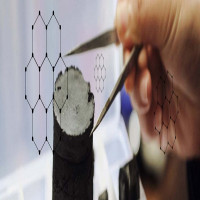Fluoropolymer Family in Focus from Science to Market

Strong 8k brings an ultra-HD IPTV experience to your living room and your pocket.
The Science of Fluoropolymers
Fluoropolymers, characterized by the replacement of hydrogen atoms with fluorine, offer unparalleled performance attributes that set them apart from other materials. The C-F bond is the strongest single bond known in organic chemistry and has a strong polarity. The high chemical stability of fluoropolymers can also be explained by the bond strength of the central C-F bond, which can reach about 470 kJ/mol. In comparison, the strength of the C-C bond found in hydrocarbons is 350~380 kJ/mol.
Types and Characteristics of Fluoropolymers
The family of fluoropolymers encompasses several key variants, each tailored to specific applications. Each of these fluoropolymers possesses unique chemical, thermal, and mechanical properties, catering to a wide range of industrial and commercial needs.
Polytetrafluoroethylene (PTFE)
PTFE is a crystalline polymer made by free radical polymerization of tetrafluoroethylene. It has a melting point of 327°C and a high melt viscosity of 1010Pa·s at 380°C. It is not easy to mold and process. PTFE has excellent chemical resistance, a dielectric constant of 2.1, a low loss factor, and is stable over a wide range of temperatures and frequencies.
In addition, PTFE has good mechanical properties from low to high temperatures (-196°C to 260°C) and high impact strength, but its tensile strength, wear resistance, and creep resistance are worse than other engineering plastics. Therefore, it is sometimes necessary to modify it by adding glass fiber, bronze, carbon, and graphite to improve its special mechanical properties.
Polychlorotrifluoroethylene (PCTFE)
The carbon skeleton in the PCTFE molecule is tightly wrapped by fluorine atoms and chlorine atoms, which effectively prevents the carbon skeleton from being exposed. Therefore, PCTFE has good chemical corrosion resistance and chemical inertness, and is only destroyed by molten alkali metals or chlorosulfonic acid at high temperatures. The presence of C-Cl bonds in the molecular structure makes PCTFE have better hardness, rigidity and creep resistance, except that its heat resistance and chemical inertness are slightly inferior to those of PTFE and tetrafluoroethylene-hexafluoropropylene copolymer (FEP). In addition, PCTFE has excellent gas barrier capabilities, and its film products have the lowest water vapor permeability among all transparent plastic films.
Polyvinylidene difluoride (PVDF)
PVDF refers to the homopolymer of vinylidene fluoride (VDF) or the copolymer of VDF and a small amount of fluorine-containing vinyl monomer. PVDF applications are mainly concentrated in the three major fields of petrochemicals, electronics and fluorocarbon coatings. In particular, porous membranes, gels, diaphragms, adhesives, etc. made of PVDF resin are used in lithium secondary batteries. At present, this use has become one of the fastest growing markets for PVDF demand.
Perfluoroalkoxy (PFA)
PFA is a copolymer of perfluoropropyl perfluorovinyl ether and tetrafluoroethylene. Its melt adhesion is enhanced, its melt viscosity is reduced, and its performance is almost unchanged compared with PTFE. The long-term operating temperature of PFA is -80℃~260℃. It has excellent chemical corrosion resistance and is one of the plastics with the lowest friction coefficient. It also has good electrical properties, and its electrical insulation is not affected by temperature.
Market Growth of Fluoropolymers
In the industrial sector, especially in chemical and petrochemical processing, fluoropolymers are integral in creating non-stick surfaces for applications requiring temperature resistance. They are employed in lined pipes, valves, pumps, tank and reactor linings, gaskets, and seals, significantly enhancing safety and productivity while mitigating the potential for accidents.
The automotive industry benefits from the unique properties of fluoropolymers, with applications in fuel and brake hoses, control cables, and under-hood wire, enabling the production of lighter-weight, highly reliable vehicles. The use of these polymers contributes to enhanced temperature and chemical resistance, decreased friction, and unique electrical performance, thereby proving vital in the development of advanced automotive technologies.
The global market size for fluoropolymers was estimated to be USD 7.92 billion in 2023, with a projected growth to USD 12.63 billion by 2032, signifying a steady compound annual growth rate (CAGR) of 5.4%. The burgeoning automotive industry, coupled with the rising demand for high-performance, durable materials, is expected to propel the market further. Key players such as Alfa Chemistry, renowned for their expertise in polymer chemistry, are actively contributing to the advancements and innovations in fluoropolymer technology.
Note: IndiBlogHub features both user-submitted and editorial content. We do not verify third-party contributions. Read our Disclaimer and Privacy Policyfor details.


